The content of the article
Potatoes in Russia usually plant huge areas. Even in household plots, the lion's share of the land is under the control of the “second bread”. And potato is considered unpretentious culture. Few give her due attention. After all, how are they usually doing? They chopped up the earth, threw the tuber, once they got it, spud it, gathered it in the fall. And what is collected? What has grown.
After all, it’s not customary to have a ceremony. If the quality is disappointing, then take the quantity. How to grow a good potato crop? Good is not 100 buckets with 10 acres. These are 50-70 buckets from 1 hundred parts.
Just do not say that this is unrealistic. It is doable on their own. True, you have to bow. But instead of 6 acres of land, one will be enough. Plus, you have to process a smaller area, so let's get started.
What matters for a good potato crop? Just a few components. The list is small, but each item is important:
- land preparation
- seed selection and preparation
- landing dates
- care and treatment
- harvest
Consider everything in detail and try to mention some tricks. We will consider all proportions in terms of 1 hectare of land. That is, 20 beds 5 meters long.
Land preparation
It’s not enough just to dig the soil in the winter. Of course, the roots of the weeds freeze, and some pests will die. But the potato is the lady, she likes to eat. Therefore, pre-winter fertilizing is a mandatory procedure.
Ideally, this should be manure that is well rotted. But now it’s difficult and expensive to get it. So we are looking for alternative methods:
- Compost, humus. It will take a lot, up to 100 kg. Plus 2 buckets of the most common ash. All this is scattered around the site and dug up.
- Green liquid fertilizer. It will take 50 liters. They also spill the soil, then dig it up.
- Siderata. Sowing in August, you can get a good crop by the end of October. It is mowed and tucked into the ground when digging. How many grams of seeds are needed per 1 hundredth - depends on the type of plant. You need to look at the packaging.
- Mineral fertilizers. Proportions for 1 hundred parts: 20 tsp. urea, 100 tbsp. l superphosphate, 20 tsp potassium sulfate. Stir in a plastic container and sprinkle evenly over the area. Dig further.
As you can see, you can choose the most acceptable option that suits your pocket, degree of employment and worldview. Because some do not categorically recognize the mineral water, while others do not want to bother with siderata.
In spring, immediately after the snow melts, you need to bury the strawberry. This will break the top crust and allow weeds to grow actively. Until the potatoes are planted, they can be cut or weathered. Thus, weeds will not interfere with seedlings.
Furrows need to be cut directly on the day of planting. It is recommended to shed the beds with copper sulfate or Bordeaux liquid. This will be the initial protection against late blight. Potatoes are planted in the usual way under a shovel. Or make a deep furrow, lay out the tubers, then sprinkle with earth.
Tip. A potato loves freedom; its root system grows wide. Therefore, the most suitable landing pattern for her is 50 by 50 cm.
Seed selection and preparation
Of course, not seeds, but tubers. Anyhow planting is not recommended. Because the unknown something will grow. If you can boast about your collection of varieties, congratulations. What to do for those who do not have it? It is advisable to buy seed potatoes in special stores. You can ask friends.If all else fails, we will work with what is available.
Pre-planting preparation begins long before the beginning of May. Potatoes need to be greened and sprouted. A month before planting, the tubers are laid out in a single layer in wide boxes with wet sawdust. Before this, each potato is soaked in a strong solution of potassium permanganate for 20 minutes, then dried. Once a week, tubers are sprayed with any biostimulant. Strictly monitor the moisture content of sawdust. If necessary, spray with water. By the time of planting, the tubers will turn green, strong sprouts and a good root system will appear.
To activate germination, you can make a neat cut of the tuber peel to a depth of about 1 cm. Across the entire circumference without touching the kidneys. Sections are dusted with dry ash.
If on occasion you got a tuber of a good variety, and you want to propagate it, then do not rush to shred it into pieces. Put the potatoes on the sawdust, wait for the sprouts to appear. Gently break them off and plant them in the ground like seedlings. A tuber will give new sprouts. This can be repeated two more times. If you did everything right, then by the time of planting you will have about 15-20 sprouts. They are planted in the same way as tomatoes. With proper care in the fall, you will get a good harvest of tubers that you can leave on the seeds.
When planting in the hole, you must definitely throw the zhenya dry onion husks and a tablespoon of ash. Sprouted tubers sprouts strictly down! Do not worry, they know very well which way they should grow. But the underground part of the stem will be longer, which will allow the formation of more stolons. Accordingly, there will be more tubers.
Tip. Throw a small piece of dry orange peel into each well. This will temporarily confuse pests. The aroma of citrus will scare them away.
Landing time
When to plant potatoes? Each region has its own deadlines. Usually this is the time when the soil temperature reaches + 7-9 ° C. In order not to run with a thermometer in the corners of the site, you need to navigate the nearby trees. Bird cherry has blossomed, and on a birch leaves have blossomed? So the time has come, the land has warmed up enough.
By the way, the optimal seed placement depth is not more than 15 cm. Otherwise, you will have to wait for seedlings for a very long time. With the size of the tubers slightly larger than the chicken egg per 1 hundredths (20 five-meter beds), you will need only 5-6 buckets of planting material.
Care and handling
Caring for potatoes is not that difficult. Of course, letting the growth of landings drift is not worth it, but excessive care will be unnecessary. Basic postulates:
- Weeds. Potato plantings need to be loosened periodically until the tops are completely closed. This should be done every 3 weeks. Simultaneously with loosening, sprouted weeds are cut. It is not necessary to remove them from the beds. Let them stay as mulch.
- The disease. Once every two weeks, the tops of potatoes need to be sprayed with a solution of phytosporin or Bordeaux liquid. Right on the leaves. This is done to prevent the disease planting late blight.
- Colorado beetle. The most important pest. Some sources recommend collecting beetles by hand. But this method only works if your neighbors do the same. Otherwise, you have to collect Colorado all season. And if hectare is planted? How long will the pens be? You still have to spray potatoes with insecticides.
- Watering. Potatoes are absolutely not picky about regular watering. It is better to shed it well three times a season to a depth of 40 cm, than to sprinkle a little water from above once a week. The first time watered after emergence. The second is when buds appear. The third - a week after the end of flowering.
- Top dressing. Potato is grateful for any top dressing. Nitrogen, mineral, green, on the leaves or under the root. The main rule is to apply fertilizer only after the appearance of buds. Then all the food will go to the tubers.If the mistress is treated earlier, there will be a lush thick tops instead of powerful tubers.
Tip. To temporarily confuse beetles, you can sow marigold or marigold in the aisles. Their strong aroma does not allow bugs to find potatoes. Just remember, you have to sow a lot of flowers.
Harvest
Do not rush to dig potatoes ahead of time. It happens that home, especially the older ones, literally eat up baldness: “We must quickly choose the potatoes, out, all the neighbors have already dug up”. Do not chase the neighbors. They have their own atmosphere. What matters to us is not only a good potato crop, but its further preservation. And for the tubers to be fully prepared for winter lying, they must have a dense peel.
How to achieve this if all the deadlines have already passed? What to do if the forecast promises cooling or rains, and the peel on fresh potato is peeled off with a finger? First you need to mow the tops, leaving stumps about 10-12 cm. They are needed as a guide to know where to stick the forks when digging. Even if the tops are juicy and green, you have to get rid of it. Sorry, but what to do. Thus, an artificial autumn is created for the tubers. No tops - no food - it's time to get ready for wintering.
And only 7-9 days after the procedure, you can start digging. During this time, the skin is sufficiently compacted.
Most of the habit of digging with a shovel. This is many times harder. Yes, and a lot of cut tubers. Try ordinary garden pitchforks; you may not be able to refuse them. Do not be afraid that part of the tubers will remain in the hole. The earth is compressed enough and will turn out a whole lump. And then do not yawn, pick a crop.
Do not rush to take the tubers directly to the cellar. Let it lie in the sun for 3-4 hours. During this time, they will dry well, and the sun's rays will kill most of the underground pathogenic bacteria.
Next, the potatoes need to be placed in a dark barn for 5-7 days, without access to light. So most damage or illness will manifest. And only after that you can sort the tubers. Those that are intended for seeds, it is better to green in the light for about 2 more weeks. This will allow them to go faster in spring.
The rest of the crop is stored in a cool dark cellar. So that in winter the potatoes do not hurt, the room is treated with whitewash or vitriol, then with a sulfur block. All enjoy the fruits of your hands.
Alternative hilling
An alternative hilling method has recently appeared. It is too early to speak about serious results. But the reviews about him are the most positive. The method is suitable for those who do not want to wave a hoe, hilling landings or carry a plow.
It consists in the fact that the earth is not raked from the sides of the bush, but poured directly into the center. That is, the stems are not collected in a heap, but rather collapse to the sides. In this case, do not drag the soil with buckets. You can take it from the aisle with a shovel or scoop.
Thus, the lower part of the stems is underground, as with normal hilling. But, due to the fact that they are collapsed, there is more room for tuber growth. And the crop grows by 15-20%.
Someone will say, it’s harder to throw the soil with a shovel than to move a hoe. And who said it was easy? In a different way, yes, but not much easier than usual hills.
Tip. To get started, try on several bushes. What if you don’t like the result?
Mulch planting
The method has already been tested and has both supporters and opponents. Its essence is that the tuber is not buried in the soil, but left on the surface. By the way, you can even on the turf. But on top lay a thick layer of mulch. In process of its decay and subsidence, add new portions. In autumn, you just have to rake the grass to the side and collect clean tubers.
Advantages of the method:
- no need to spud
- harvest due to direct contact with humus is 20% higher
- tubers are absolutely clean
- no danger of catching disease from the soil
Cons of the method:
- the mulching layer must be at least 50 cm, otherwise the whole crop will be green
- shrews and field mice also love potatoes
- if the mulch starts to mold, then the whole potato molds
- where to get so much grass?
Of course, this method is not suitable for planting large areas. Because the grass will have to be carried in stacks for the desired thickness. But you can try on several tubers. Surely, on the site there is a free piece of land for the experiment.
Tip. As for top dressing and pest control, with this method they are used in the same way as with the classical method of planting.
Landing in circular ridges
Another alternative landing method. Saves on fertilizers and water for irrigation, but requires a little more area. The essence of the method is as follows:
- On the ground mark a circle with a diameter of 1 meter. Prepared tubers are laid around the circumference at a distance of 30 cm from each other, then sprinkled with a soil layer of 10 cm.
- With a seedling height of 9-12 cm, the bushes spud. The soil is scooped up with a chopper from the center of the circle.
- The operation is carried out two more times. Gradually, a kind of bagel turns out - in the center of the pit, and around a hill with landings.
So you can be sure that all the nutrients go straight to the roots, and do not spread between rows. The method is not bad, it increases the yield by almost a third. But very labor intensive. After all, it will not be possible to simply drive with a plow to huddle the stems. Have to wave the hoe well.
Useful and interesting facts.
- If you uprooted old blackcurrant bushes, try planting potatoes in this place. With little effort, 5 buckets of selected large tubers are collected from 5 linear meters. True, only in the first year. Further productivity falls.
- A story is known when potato planting was already finished, when a heavy downpour with large hail suddenly started. Accordingly, in the last 4 beds a decent amount of water was poured into the holes and poured with hail. What was the surprise in the fall when cleaning! The tubers were large, clean and smooth. That is, watering directly into the hole at the time of planting significantly increases the yield. The method is laborious if you plant a whole field. But you can try on several beds and compare the results.
- What to do if you want young potatoes, and you planted only varieties of the usual ripening period? No need to run to the neighbor and buy from her. You need to wear gloves and stomp on your garden. We carefully dig out the soil on the side of the ridge. We find the potatoes. Carefully tear off the largest. The rest fall asleep back and the next day do not forget to shed a bush and feed it. And we ourselves go to another and repeat the operation. So just you can taste the young potatoes, even if planted only late.
- Do not plant the entire plot in one variety. What if this particular year will prove to be barren for him, despite all your efforts? Better plant several types of potatoes and different ripening dates. So you will be sure that even under the most severe weather conditions, you will get your crop.
How to grow a good potato crop? Follow agricultural practices, have good seeds and don't be lazy. As it is customary to say among the people: as you drown, you rush.
Video: the secrets of growing potatoes

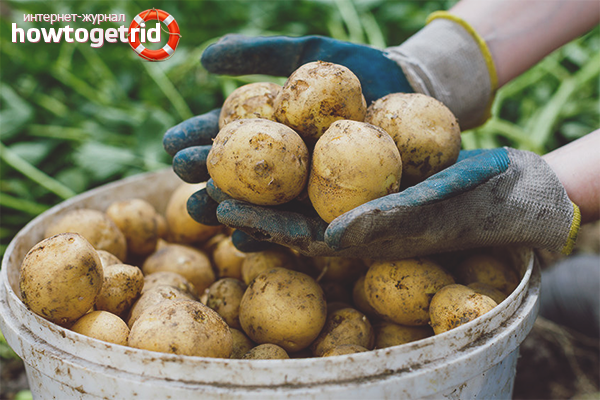

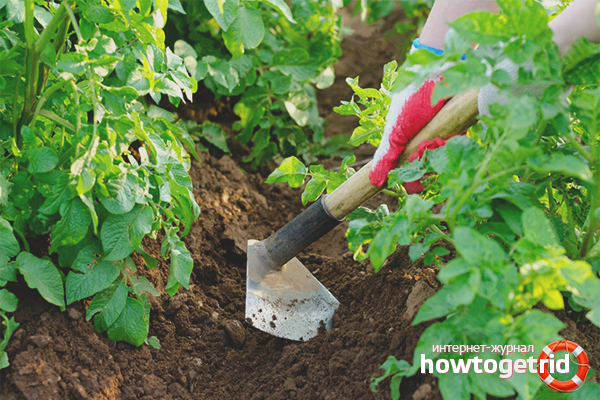
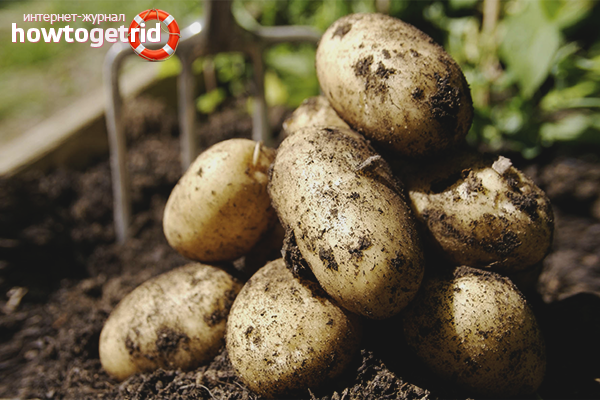
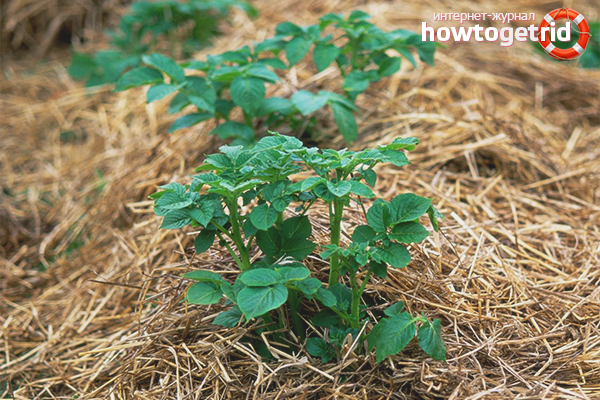

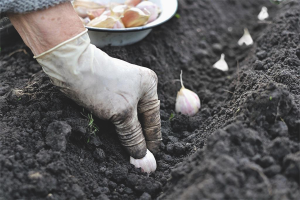
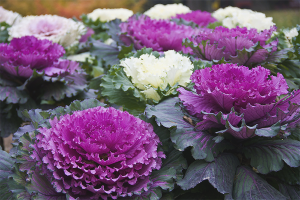

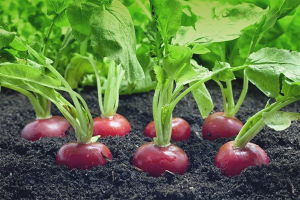
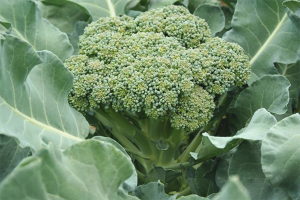
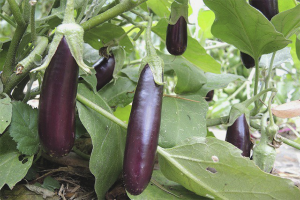

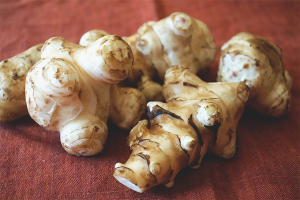
Submit